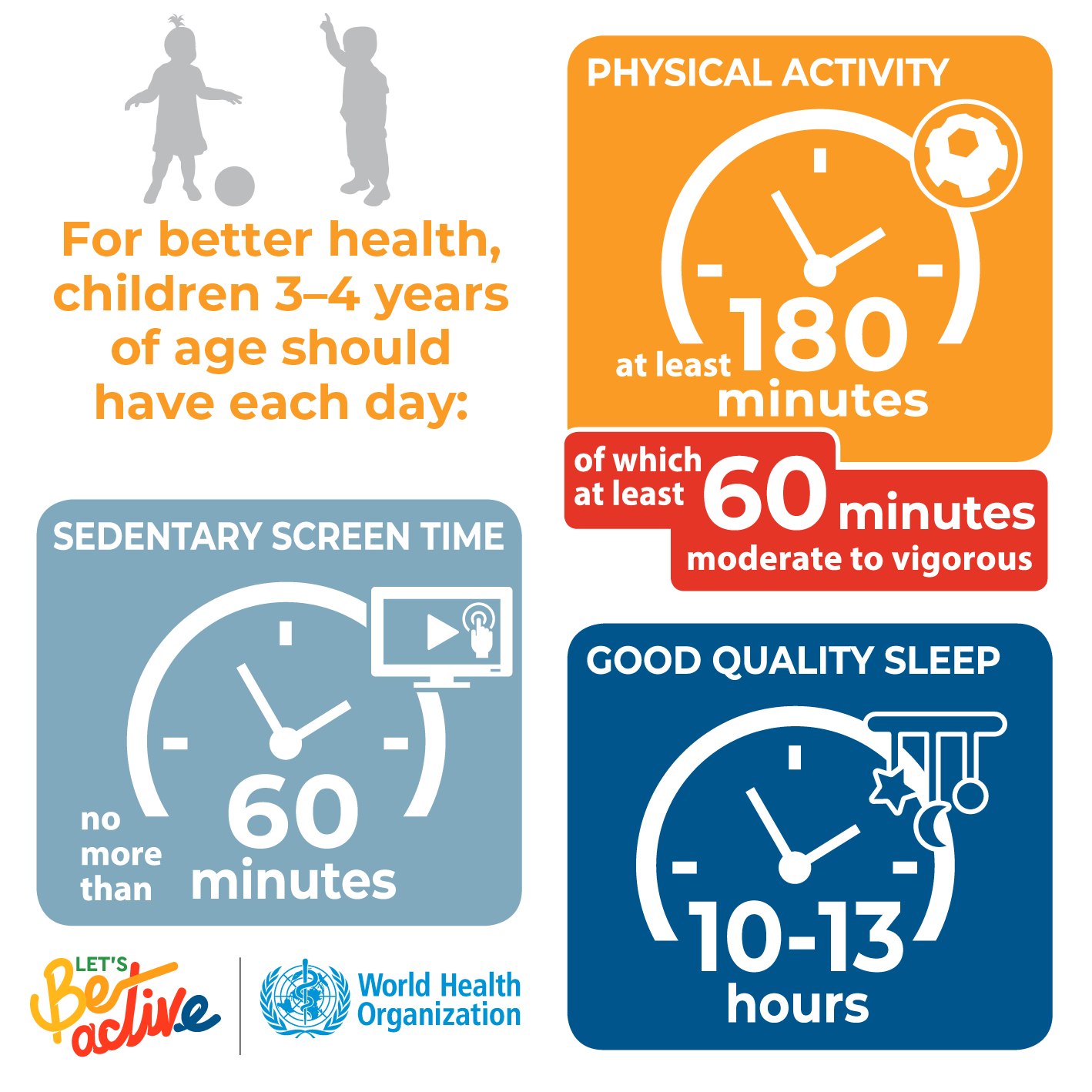To grow up healthy, children need to sit less and play more
Children under five must spend less time sitting watching screens, or restrained in prams and seats, get better quality sleep and have more time for active play if they are to grow up healthy, according to new guidelines issued by the World Health Organization (WHO).
“Achieving health for all means doing what is best for health right from the beginning of people’s lives,” says WHO Director-General Dr Tedros Adhanom Ghebreyesus. “Early childhood is a period of rapid development and a time when family lifestyle patterns can be adapted to boost health gains.”
The new guidelines on physical activity, sedentary behaviour and sleep for children under 5 years of age were developed by a WHO panel of experts. They assessed the effects on young children of inadequate sleep, and time spent sitting watching screens or restrained in chairs and prams. They also reviewed evidence around the benefits of increased activity levels.
“Improving physical activity, reducing sedentary time and ensuring quality sleep in young children will improve their physical, mental health and wellbeing, and help prevent childhood obesity and associated diseases later in life,” says Dr Fiona Bull, programme manager for surveillance and population-based prevention of noncommunicable diseases, at WHO.
Failure to meet current physical activity recommendations is responsible for more than 5 million deaths globally each year across all age groups. Currently, over 23% of adults and 80% of adolescents are not sufficiently physically active. If healthy physical activity, sedentary behaviour and sleep habits are established early in life, this helps shape habits through childhood, adolescence and into adulthood.
“What we really need to do is bring back play for children,” says Dr Juana Willumsen, WHO focal point for childhood obesity and physical activity. “This is about making the shift from sedentary time to playtime, while protecting sleep. “
The pattern of overall 24-hour activity is key: replacing prolonged restrained or sedentary screen time with more active play, while making sure young children get enough good-quality sleep. Quality sedentary time spent in interactive non-screen-based activities with a caregiver, such as reading, storytelling, singing and puzzles, is very important for child development.
The important interactions between physical activity, sedentary behaviour and adequate sleep time, and their impact on physical and mental health and wellbeing, were recognized by the Commission on Ending Childhood Obesity, which called for clear guidance on physical activity, sedentary behaviour and sleep in young children.
Applying the recommendations in these guidelines during the first five years of life will contribute to children’s motor and cognitive development and lifelong health.
Recommendations at a glance
Infants (less than 1 year) should:
Be physically active several times a day in a variety of ways, particularly through interactive floor-based play; more is better. For those not yet mobile, this includes at least 30 minutes in prone position (tummy time) spread throughout the day while awake.
Not be restrained for more than 1 hour at a time (e.g. prams/strollers, high chairs, or strapped on a caregiver’s back). Screen time is not recommended. When sedentary, engaging in reading and storytelling with a caregiver is encouraged.
Have 14–17h (0–3 months of age) or 12–16h (4–11 months of age) of good quality sleep, including naps.
Children 1-2 years of age should:
Spend at least 180 minutes in a variety of types of physical activities at any intensity, including moderate-to-vigorous-intensity physical activity, spread throughout the day; more is better.
Not be restrained for more than 1 hour at a time (e.g., prams/strollers, high chairs, or strapped on a caregiver’s back) or sit for extended periods of time. For 1-year-olds, sedentary screen time (such as watching TV or videos, playing computer games) is not recommended. For those aged 2 years, sedentary screen time should be no more than 1 hour; less is better. When sedentary, engaging in reading and storytelling with a caregiver is encouraged.
Have 11-14 hours of good quality sleep, including naps, with regular sleep and wake-up times.
Children 3-4 years of age should:
Spend at least 180 minutes in a variety of types of physical activities at any intensity, of which at least 60 minutes is moderate- to vigorous intensity physical activity, spread throughout the day; more is better.
Not be restrained for more than 1 hour at a time (e.g., prams/strollers) or sit for extended periods of time. Sedentary screen time should be no more than 1 hour; less is better. When sedentary, engaging in reading and storytelling with a caregiver is encouraged.
Have 10–13h of good quality sleep, which may include a nap, with regular sleep and wake-up times.
More information:



